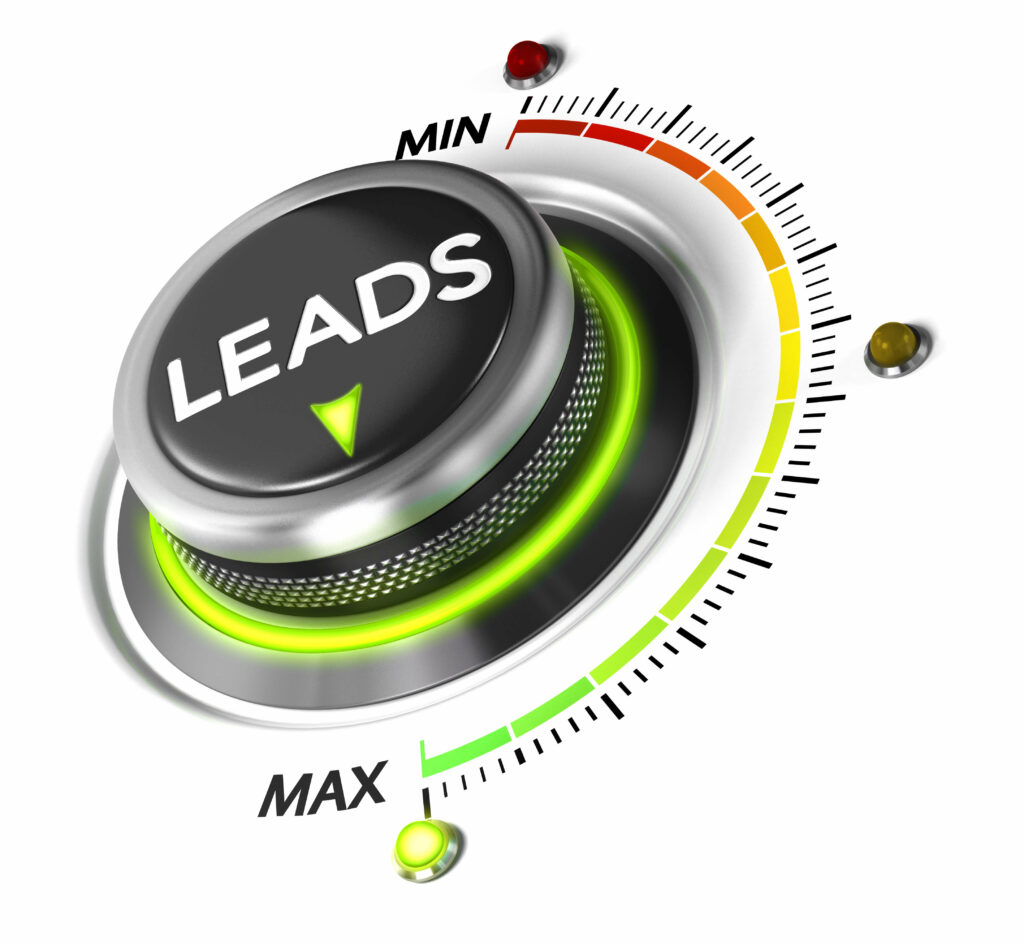Struggles in Lead Generation & How to Overcome Them
June-20-2022
Are you having trouble expanding your lead generating campaigns? If that’s the case, you’re not the only one. There are many lead-generation challenges that people face every day.
Below we will discuss 4 common lead generation struggles that most companies face today.
1. How to improve Lead quality
2. How to increase Lead Volume
3. How to decrease Cost per lead
4. How to increase your conversion rate
If you’re having trouble with these issues, this is the blog for you!
1. Improve Lead Quality
It may be a waste of time and money if the leads are of poor quality. This is why we should concentrate on improving lead quality!
Increase your sales efficiency and marketing ROI by optimizing for lead quality. Here are three lead-quality-improvement techniques that have worked for us and our clients:
- Use more in-depth lead forms with required fields
If you’re having trouble with low-quality leads, you might need to redesign your forms to enhance lead data and filter out low-quality leads.
Adding extra necessary fields to the form in native lead gen advertisements, contrary to popular belief, does not generally boost the CPL significantly (thanks to the algorithm!). You must, however, make certain that the questions are appropriate and that you do not go beyond. It’s all about reaching the best balance.
- Track and analyze leads that convert
You’re effectively “flying blind” if you don’t have a system in place to track prospects as they progress through the marketing funnel. You may have a concept of what a good lead looks like, but do you relate a lead’s conversion to the campaign from which it originated? Do you know how many stages a lead went through before becoming a customer?
If you don’t know the answers to these questions, try using a lead tracking and analysis solution to learn more about your leads and funnel. This will allow you to better identify where good leads are coming from and optimize accordingly.
- Refine your ideal customer profile & buyer personas
For high-quality lead generation, it’s crucial to target the correct audience. It is critical to fully identify and describe your ideal consumer in order to reach the correct target audience.
For the same reason, a tight alignment between the marketing and sales departments is required. Too frequently, Sales and Marketing work in isolation, with little contact and collaboration between them. Encourage the two teams to get together and discuss what the company’s ideal consumer looks like in order to tackle this problem.
You may then move on with more precise lead gen efforts once you’ve built a thorough ICP and/or buyer personas (which include demographics, interests, pain areas, and so on).

2. Increase Lead Volume
This is the most obvious lead generation challenge! The marketing funnel depends on a steady stream of leads, and boosting lead volume may help solve many issues.
More data and insights to optimize your ads and address problems = higher lead volume.
“Focus on quality rather than quantity for greater lead generation,” we’ve all heard. However, how can you optimize for higher lead quality if you don’t have enough leads to test and experiment with?
So, what’s the best way to improve lead volume?
Choosing the right channels is the first step in increasing lead volume. There are several potential platforms to pick from; the challenge is to figure out which ones are most profitable for your company. It’s also important to evaluate ad kinds, formats, and settings, which mostly basically comes down to trial and error.
Facebook is the world’s largest social media network, with almost 3 billion monthly active members. It is a great medium for reaching the public and growing campaigns because of its unmatched scope.
LinkedIn is the king of B2B lead generating. LinkedIn is an excellent place to market your products and services since it is the leading professional networking platform.
Google is the only site on this list that isn’t a social network, which gives it a significant edge. Google traffic may be exceptionally high-intent because it is based on search queries (rather than casual scrolling).
Lead Gen ads
You should seriously consider employing native lead generation advertisements to enhance your lead generation efforts on these sites. Each of the platforms listed above has a native ad type dedicated to capturing leads.
When compared to normal ad formats, native lead generation advertising frequently achieves a 50% reduction in CPL. With the same ad budget, advertisers may double their lead volume.
Nonetheless, testing and optimization are still required. For example, you’ll need to strike a balance between asking too many and too few questions on the form. Asking too many or irrelevant questions can reduce conversion rates, while asking too few questions might result in poor lead quality.
3. Decrease cost per Lead (CPL) Lead Cost
Two of the three key pillars of modern lead generation are quantity and quality. What about the third? Cost. If the cost-per-lead (CPL) is too high, the ROI and, as a result, the overall performance of a lead generation effort will suffer.
A low/affordable CPL, on the other hand, helps marketers to achieve a high ROI and scale up to increase revenue profitably.
The volume of leads, conversion rate, and cost are all linked. As a result, some of the advice we gave in the preceding sections on volume and conversion rate also applies to lead cost. Native lead generation advertisements, for example (Facebook Lead Ads, LinkedIn Lead Gen Forms, and so on) have shown to be a highly successful way of cutting CPL. Additionally, raising your conversion rate will result in a significant drop in CPL.
Let’s continue with this subject and look at a few other lead-cost-cutting strategies:
- Hone in on high-performing placements
Not all ad placements are created equal. Examine your lowest-performing ad spots across all media and consider deleting them to save money and maximize ad expenditures.
- Use A/B testing
You must regularly test your advertising and landing pages in order to optimize your campaigns. The standard A/B test, which compares two versions of an ad (or landing page) side by side to pick a winner, is the most tried-and-true strategy. For your landing pages, you may use a third-party A/B testing solution or employ a native A/B testing functionality.
- Experiment with automated bidding
Continuing with Google’s techniques, it’s worth experimenting with Google’s automatic bidding feature. Google’s algorithmic bidding predicts the possibility of your ad generating a click/conversion and adjusts your bids appropriately (which can help minimize ad spend).
Remember that the best way to improve your CPL (and other aspects of your lead generation efforts) is to test new strategies and analyze the outcomes. You’ll be able to figure out what works and what doesn’t if you experiment.
- Improve ad relevance and quality
If you’re conducting PPC ads on websites such as Google and Bing, your ad Quality Score might be hurting your campaign’s performance. Try to make your advertising and landing pages as relevant to the keywords you’re targeting as feasible to enhance your Quality Score.
4. Increase your Conversion rate
Few things upset a marketer more than creating, executing, and delivering high traffic to a campaign… just to find out that the traffic isn’t converting!
Likewise, maybe your website is getting a lot of traffic, but you’re having trouble turning those visitors into leads.
Start by analyzing the user experience from beginning to end to improve conversion rates. How seamless is that flow’s user experience? To elaborate, consider the following crucial elements:
- Website load time
On the internet, people’s attention spans are quite short. Even a few seconds of extra loading time might make people frustrated and leave. So, keep track of how long it takes for your site to load.
- Ease of use
Convenience and intuitive functionality are important when visitors interact with your forms and landing pages. The act of converting (signing up) should be as straightforward and painless as possible.
- Call-to-action (CTA)
In the end, it’s your call-to-action that will persuade visitors to become leads. Consider if our CTA is clear, visible, and attractive. To test for conversion, try alternative words, locations, font sizes, and so forth.
You should think about the value you’re offering to your audience in addition to the user experience factors listed above. People are more willing to share their contact information with you if you give value.
If your conversion process is one-dimensional, try diversifying your lead acquisition tactics by adding other services (downloadable material, free trials, email signups, etc.).
